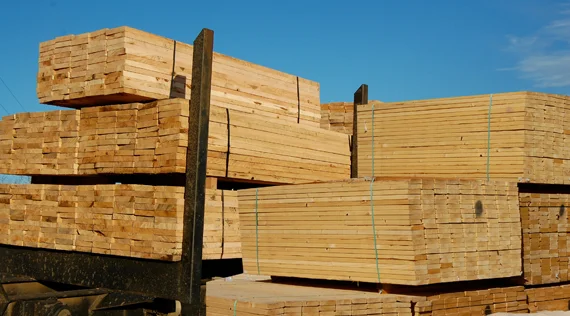
SEATTLE (Scrap Monster): Exportation of wood products from the North American west coast to Asia was fairly uneventful up until 2010 when shipment of particularly logs from the US and lumber from British Columbia took off to levels not seen for almost 20 years. From 2009 to 2013, the value of logs and lumber shipped over the Pacific Ocean surged from 1.7 billion dollars to 4.9 billion dollars. Since the record high in 2013, the total export value has fallen quite substantially and was just over 3.3 billion dollars in 2015.
Continued increase in US housing constructions, growing demand for wood, high lumber prices, imposed import tariffs on Canadian lumber,and a strong US dollar are recent market developments that will impact forest products market dynamics in 2017,not only in North America, but on other continents as well, reports the Wood Resource Quarterly (WRQ).
The US Department of Commerce announced on April 25 preliminary countervailing duties (CVD) on Canadian lumber imported to the US. The rate range for Canadian lumber producers, taking effect on May 1, 2017, was set from 3.0 to 24.12% with an average of about 20%.
The announcement of the high tariffs did not come as a surprise and will probably not increase lumber prices over the next few months, as many lumber traders in the US had already accounted for a higher cost for lumber shipped from its neighbor in the north.
Higher costs of housing, changes in log and lumber trade flows and upward price pressure on sawlogs in the US are some of the likely mid-term impacts from the new tariffs. These repercussions become more likely if the high temporary CVD rates become permanent and the anti-dumping duties (expected in the end of June) are substantial.
Canadian lumber is very important to the US market, accounting for 32% of total lumber consumption in 2016. Overseas importation of softwood lumber from Europe, Latin America and New Zealand has gone up for four consecutive years with 2016 import volumes being 2.5 times higher than those in 2012, however, they still only account for five percent of total imports to the US. Despite the past few years’ substantial increase in overseas lumber supply to the US, import volumes in 2016 were still only 24% of the record high volumes of 2005. It is noteworthy that with the predicted rise in demand for lumber in the US in 2017, both domestic production and imports need to increase to meet the higher consumption levels. Even if overseas imports bounced up to their 2005 record highs, import volumes from Canada would still have to be higher than in 2015 to meet expected demand, according to the WRQ (www.woodprices.com).
Canada will remain a large and very important supplier of softwood lumber to the US market in the future but Canadian lumber companies will continue to diversify into new markets in Asia, Europe and the MENA countries (Middle East and Northern Africa).
Courtesy: Wood Resources International
| Copper Scrap View All | |
| Alternator | 0.32 (0.01) |
| #1 Copper Bare Bright | 3.77 (0.07) |
| Aluminum Scrap View All | |
| 356 Aluminum Wheels (Clean) | 0.73 (0.02) |
| 6061 Extrusions | 0.64 (0.02) |
| Steel Scrap View All | |
| #1 Bundle | 475.00 (0) |
| #1 Busheling | 495.00 (0) |
| Electronics Scrap View All | |